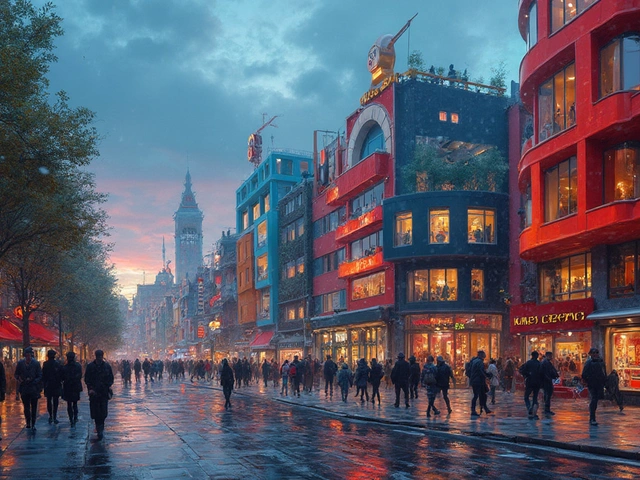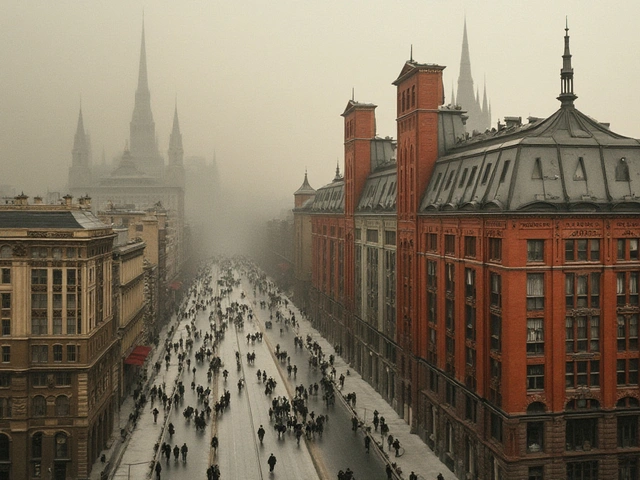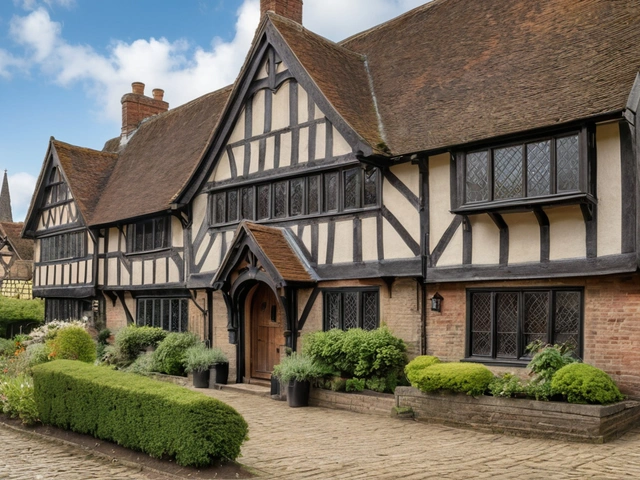Foundations of Beaux-Arts Architecture: The Birth and Expansion
As I walked my adorable, ever-inquisitive Golden Retriever, Baxter, the other day, we passed by a magnificent building crafted in a style so grandiose that it could only be described as Beaux-Arts. As Baxter sniffed at an errant leaf, I found myself marveling at the attention to detail, the elegance and thought that must have gone into the design of such an edifice. Originating from the École des Beaux-Arts in Paris during the 19th Century, Beaux-Arts architecture took the world by storm and has since left an indelible impression on the urban landscapes of major cities across the globe, right from Paris to New York.
It was renowned architects, such as Charles Garnier and Henri Labrouste who pioneered and enhanced the Beaux-Arts style during the 1800s. Industry magnates, banking powerhouses of the time and even city officials rushed to commission buildings, the design of which would exude splendor, power, and civic pride. Fascinating, isn’t it? This style of architecture quickly trickled down to residential designs as well, transforming the face of domestic architecture.
Characteristics of Beaux-Arts: Embodying Grandeur
Picture this scene. It's a chilly Sunday morning, the kids – Laurel and Tristan – are occupied with a heated game of chess, and Darcy, our Maine Coon, is perched next to me all set for her daily grooming session. As I gently brush Darcy, my thoughts drift to the defining aspects of Beaux-Arts architecture. Inspired by classical Roman and Greek architecture, Beaux-Arts is characterized by grand design elements that are constantly taken to the next level, to what some would even term as extravagant. Symmetry, elaborate ornamentation, and impressively detailed facades are just the tip of the iceberg when it comes to defining this architectural style.
I remember my first encounter with a Beaux-Arts residential building. Its array of sculptural decorations, grand entryway, and ornately carved doors left me in awe and fascinated by the level of accuracy and attention to detail that the architects and builders of the time had managed to achieve without the use of modern machinery. If anything, the beautiful homes that adorn cities across the world are nothing short of masterpieces and a testament to the sheer genius of the architects who dreamt them into existence.
Prominent Beaux-Arts Structures Around the Globe: A Sculpture in Stone
One fine day, in the middle of our homeschooling session, Tristan asked me about some of the famous Beaux-Art architectural wonders around the world. Excited to share details, I proceeded to tell them about the New York Public Library, the Metropolitan Museum of Art in New York City, the Montana State Capitol in Helena, the Buenos Aires Central Post Office in Argentina, and several more. Each of these structures, though separated by oceans and cultures, embody the essence of Beaux-Arts architecture - intricate detail, grandeur, and a sense of magnificence that engulfs anyone who beholds them.
One can’t forget the Grand Palais in Paris, which is widely considered as the epitome of Beaux-Arts architecture. The stunning glass and steel structure, with an opulently decorated exterior, is an awe-inspiring sight. Architecturally, it features a blend of traditional techniques, such as stone facades, and innovative designs, such as its iron framing and large glass sections, showcasing the blend of the old and new that Beaux-Arts embraces so well.
The Ageless Appeal of Beaux-Arts: A Living Testament of Artistic Ingenuity
Now, you'd probably ask, "Oliver, why do you have such a fascination with Beaux-Arts architecture?" Well, the answer is simple. Beaux-Arts architecture is a testament to the timeless elegance of classic design principles, that are ever inspiring. Despite the popularity of minimalist and contemporary design trends, the grandeur and opulence that Beaux-Arts architecture encapsulates continue to capture the admiration of architects and enthusiasts alike. It reminds me of a saying the Massachusetts Institute of Technology once posted, "Technology makes it possible; the arts make it worthwhile." Beaux-Arts embodies this principle. It's more than just a brick-and-mortar structure; it's a living testament of artistic ingenuity.
The beauty of it, like many good things in life, lies in the details - the careful application of decorative elements, the sculptural reliefs accentuating a wall, the emphasis on a balanced and symmetric facade, the opulent interiors designed to captivate and amaze. Every time I walk past one of these stunning structures, it reinforces my belief in the ability of human ingenuity to merge art, history, and function into a design that triumphs over the test of time, just like a fine wine, it only gets better with age.





